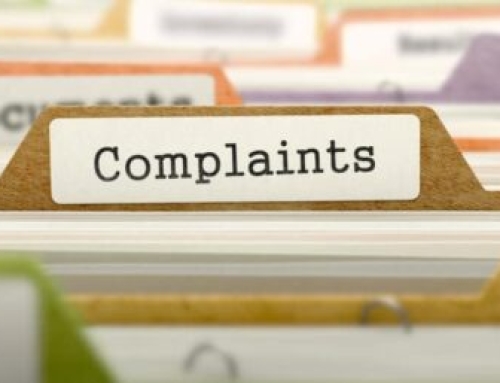The Consumer Financial Protection Bureau (CFPB) recently issued a Notice of Proposed Rulemaking (NPRM) to implement the Fair Debt Collection Practices Act (FDCPA). In today’s post, we will summarize the key elements of the newly proposed rules.
BACKGROUND/OVERVIEW
Congress enacted the FDCPA in 1977 to establish legal protections from abusive debt collection practices. In passing the laws, Congress stated that “existing laws and procedures for redressing injuries were inadequate to protect consumers.”
The FDCPA was designed to prohibit debt collectors from engaging in harassment or abuse, making false or misleading representations, and engaging in unfair practices in debt collection. Among other things, the Act protects consumers in the following ways:
- Allows consumers to control when and how debt collectors communicate with them. Notably, debt collectors are not allowed to call at any inconvenient times and can’t tell unauthorized third parties about an individual’s debt.
- Protects consumer from harassing or abusive practices such as:
- Using profane language
- Threatening or using violence
- Calling repeatedly to annoy or harass
- Calling without identifying themselves as debt collectors
- Listing a consumer’s debt for sale to the public
- Requires debt collectors to be truthful-they cannot use false, deceptive or misleading representations to collect the debt.
- Prohibits other unfair practices including:
- Soliciting post-dated checks for payment
- Depositing or threatening deposits of a post-dated check before the consumer’s intended payment date
- Collecting more than is owed on a debt[SA1]
THE RULEMAKING PROCESS
The CFPB began the rulemaking process in 2013 with a wide range of outreach, beginning with field hearings and a series of joint roundtable sessions with the Federal Trade Commission (FTC). The CFPB then initiated a number of formal actions to gain deeper insights on the debt collection industry, both from a consumer and industry perspective. These actions included:
2013 Advanced Notice of Proposed Rulemaking (ANPRM)
The ANPRM sought information about first- and third-party debt collection practices such as communication and calling practices, the use of disclosures, and the quantity/quality of information n the debt collection system, to name a few.
Consumer Testing
The CFPB engaged third-party vendors to conduct qualitative testing of two potential consumer-facing debt collection model disclosure forms-the validation notice and the statement of consumer rights. The testing included:
- Focus groups:to assess consumers’ thoughts about debt collectors and debt collection, to evaluate their perceptions of disclosures provided by debt collectors, and to measure their understanding of consumers’ rights in debt collection.
- Cognitive testing: one-on-one interviews of consumers to assess their perceptions, preferences, and understanding of different validation notices and to evaluate how each of the notices might affect consumer behavior.
Study of Debt Collection Market Operations
To better understand the operational costs of debt collection firms, including law firms, the Bureau surveyed debt collection firms and vendors. The survey focused on current practices and included questions about employees, types of debt collected, clients, vendors, software, policies and procedures for consumer interactions, disputes, furnishing data to credit reporting agencies (CRAs), litigation and compliance.
Survey of Consumer Experiences with Debt Collectors
The Bureau also surveyed consumers to learn about their experiences with debt collectors. The survey covered:
- Consumer experiences with creditors and debt collectors over the previous year, including disputes and lawsuits, and how they prefer to communicate with creditors and debt collectors.
- Consumers’ demographic characteristics, general financial situation and credit-market experience.
The Consumer Survey describes in detail several key findings, including;
- About one-third of consumers with a credit file at one of the three nationwide CRAs reported being contacted by a creditor or debt collector.
- More than one-half of the consumers who had been contacted about a debt in collection indicated that at least one of the debts about which they had been contacted was not theirs or was for the wrong amount.
- Roughly one-quarter of the consumers report having disputed a debt with their creditor or debt collector.
- About one in seven (15%) consumers reported having been sued by a creditor or debt collector in the preceding year.
PROPOSED RULES-SUMMARY
After nearly six years of study, assessment, development and testing, the CFPB posted the newly proposed rules on ConsumerFinance.Gov on May 7. The proposed rules would:
- Establish a clear, bright-line rule limiting call attempts and telephone conversations:
- The proposed rule generally would limit debt collectors to no more than seven attempts by telephone per week to reach a consumer about a specific debt.
- Once a telephone conversation between the debt collector and consumer takes place, the debt collector must wait at least a week before calling the consumer again.
- Clarify consumer protection requirements for certain consumer-facing debt collection disclosures:
- The proposed rule would require debt collectors to send consumers a disclosure with certain information about the debt and related consumer protections. This information would include, for example, an itemization of the debt and plain-language information about how a consumer may respond to a collection attempt, including by disputing the debt.
- The proposal would require the disclosure to include a “tear-off” that consumers could send back to the debt collector to respond to the collection attempt.
- Clarify how debt collectors can communicate with consumers:
- The proposed rule would clarify how debt collectors may lawfully use newer communication technologies, such as voicemails, emails and text messages, to communicate with consumers and would protect consumers who do not wish to receive such communications by, among other things, allowing them to unsubscribe to future communications through these methods.
- The proposed rule would also clarify how collectors may provide required disclosures electronically. In addition, if consumers want to limit ways debt collectors contact them, for example at a specific telephone number, while they are at work, or during certain hours, the rule clarifies how consumers may easily do so.
- Prohibit suits and threats of suit on time-barred debts and require communication before credit reporting:
- The proposed rule would prohibit a debt collector from suing or threatening to sue a consumer to collect a debt if the debt collector knows or should know that the statute of limitations has expired.
- The proposed rule also would prohibit a debt collector from furnishing information about a debt to a consumer reporting agency unless the debt collector has communicated about the debt to the consumer, such as by sending the consumer a letter.
Click on this link to read the comprehensive report on the new rules.
We will monitor and report on feedback to the proposed rules in future posts.
SOURCES
https://files.consumerfinance.gov/f/documents/cfpb_debt-collection-NPRM.pdf
https://files.consumerfinance.gov/f/documents/cfpb_debt-collection_fmg-focus-group-report.pdf
Error: Contact form not found.


